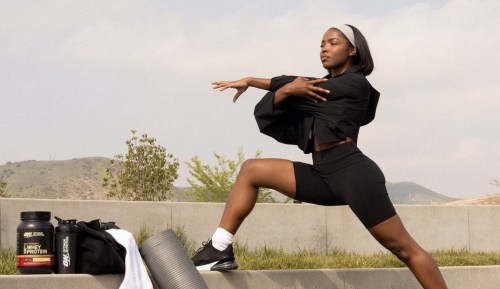Wrap Your Spine in a Column of Strength With This 15-Minute Bodyweight Posture Workout
This 15-minute bodyweight posture workout will help you surround your spine in a column of strength to stay upright all day long.

Having good posture isn’t just about reminding yourself to stand up straight whenever you think about it. It’s about having the strength necessary to actually maintain that upright position, giving your spine the muscular support that it needs.
Experts in This Article
fitness trainer and founder of Le Sweat
physical therapist and founder of Stretch Kinetics in Atlanta
For that, you need 360 degrees of strength, from both your back muscles, and your core (which actually encompasses some of your back muscles, like the erector spinae and multifidus along the spine).
“A main role of the back muscles is to keep the spine erect or extended,” Erin Policelli, a physical therapist and founder of Stretch Kinetics in Atlanta, previously told Well+Good. “In contrast, the abdominal muscles are their antagonist, and act to flex the spine. If you think of the constant force of gravity that is pulling us, the spinal muscles are needed to constantly work to keep us upright.”
That’s a big responsibility, so it makes sense that we would need to work out those stabilizers, just as we work out our larger muscles.
To do that, trainer and creator of Le Sweat Charlee Atkins has put together a 15-minute bodyweight workout specifically meant to set your body up for having good posture. You’ll do exercises meant to activate your upper body, such as T-pulls and Y-pull downs, in which you work to bring your shoulder blades together. That will strengthen your back and lats, which you’ll need to keep your shoulders from rolling forward. But a lot of the workout will be compound moves that work your upper body, back, and core all at once.
“A lot of posture is going to be core exercises,” Atkins says.
That involves some of the best exercises for posture, such as bird dogs, dead bugs, and cat cows. You’ll move your spine slowly and with control, which will require the muscles to hop to attention.
Doing these small movements that require creating tension by squeezing your muscles and pushing and pulling your limbs in opposite directions might not be as flashy as heavy lifting or HIIT. But it’s just as useful if you want to stand tall.
Sign Up for Our Daily Newsletter
Get all the latest in wellness, trends, food, fitness, beauty, and more delivered right to your inbox.
Got it, you've been added to our email list.










